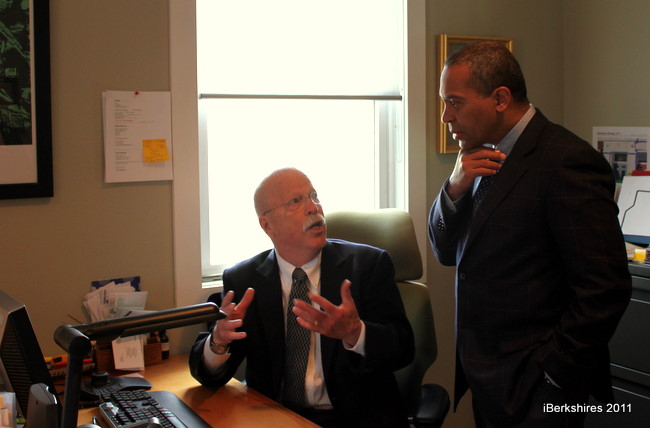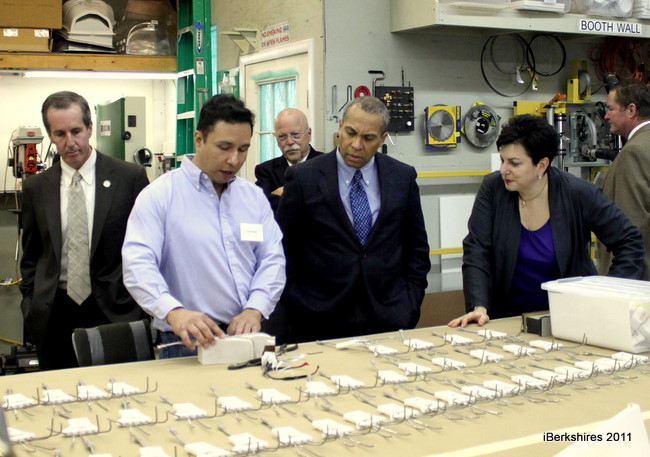
Governor Talks Hearts, Lungs, Precision Economy in the Berkshires
 Eric Chamberlain, president of the Chamberlain Group, explains the modeling work the company does to Gov. Deval Patrick. |
The governor's first stop (of three) was the Chamberlain Group, a studio that designs and builds mimetic organs for surgical and interventional training. The CG staff, including President Eric Chamberlain and his wife and managing partner Lisa Chamberlain, were there to greet him and give him a humorous, somewhat macabre tour of engineered hearts, hands and bladders to name a few parts on display.
Lisa Chamberlain, who began her career at the New York City-based design and effects studio R/GA, said virtual sculpture and technology was met with some skepticism at first.
"We have some surgical friends at Baystate [Medical Center] who were skeptical at first about simulation technologies," she told the governor. "We don't do this in every case. Although we're a small company we've taken high-end technology to use and it has become more affordable for hospitals and surgeons to use. We have a database for anatomy design and a training method around that anatomy."
In addition to allowing surgeons and residents to perform hands-on training with any given model, be it a bladder, heart or bowel, the lifelike models also allow training with the minimally invasive da Vinci robotic surgery, which is employed at many area medical centers including Baystate in Springfield, one of more than 60 clients that CG has around the world.
Mimetic models are essential for promoting confidence in surgical residents, said Dr. Gladys Fernandez, Baystate's assistant program director for the surgery residency program.
"As an educator at Baystate I started looking at our needs assessment," she said. "What I found is that people are getting great at doing things laparoscopically. We've revised the curriculum with the focus on reviving performance and taking more than a few steps back to teach residents old-fashioned, hands-on surgery."
Fernandez demonstrated for the governor using an uncanny model of a perforated bowel complete with "realistic" surface slime and delicate tissue.
 |
"In using this we're not only training them how to do the procedure but we're working on how does the tissue feel," she said. "It tears just like a human bowel, so they have to practice on making sure it holds sutures. Once they are proficient in this they become more confident and comfortable in the O.R. and in the clinical decision-making process."
Patrick said the Chamberlain Group and businesses like it are not only contributing to medical innovations but are also providing a business model for the manufacturing sector, which, he said, is where the future of the creative economy in the Berkshires rests.
"The creative economy includes but isn't limited to the performing and visual arts," he said. "If we call attention to the creative economy we should also see the resurgence of manufacturing, specifically this form of precision manufacturing. It is definitely something that you have to prepare for but you don't need a fancy degree to participate in the precision economy; it's a blend of the two. Many community colleges across the state are providing this kind of education and are bridging that gap."















